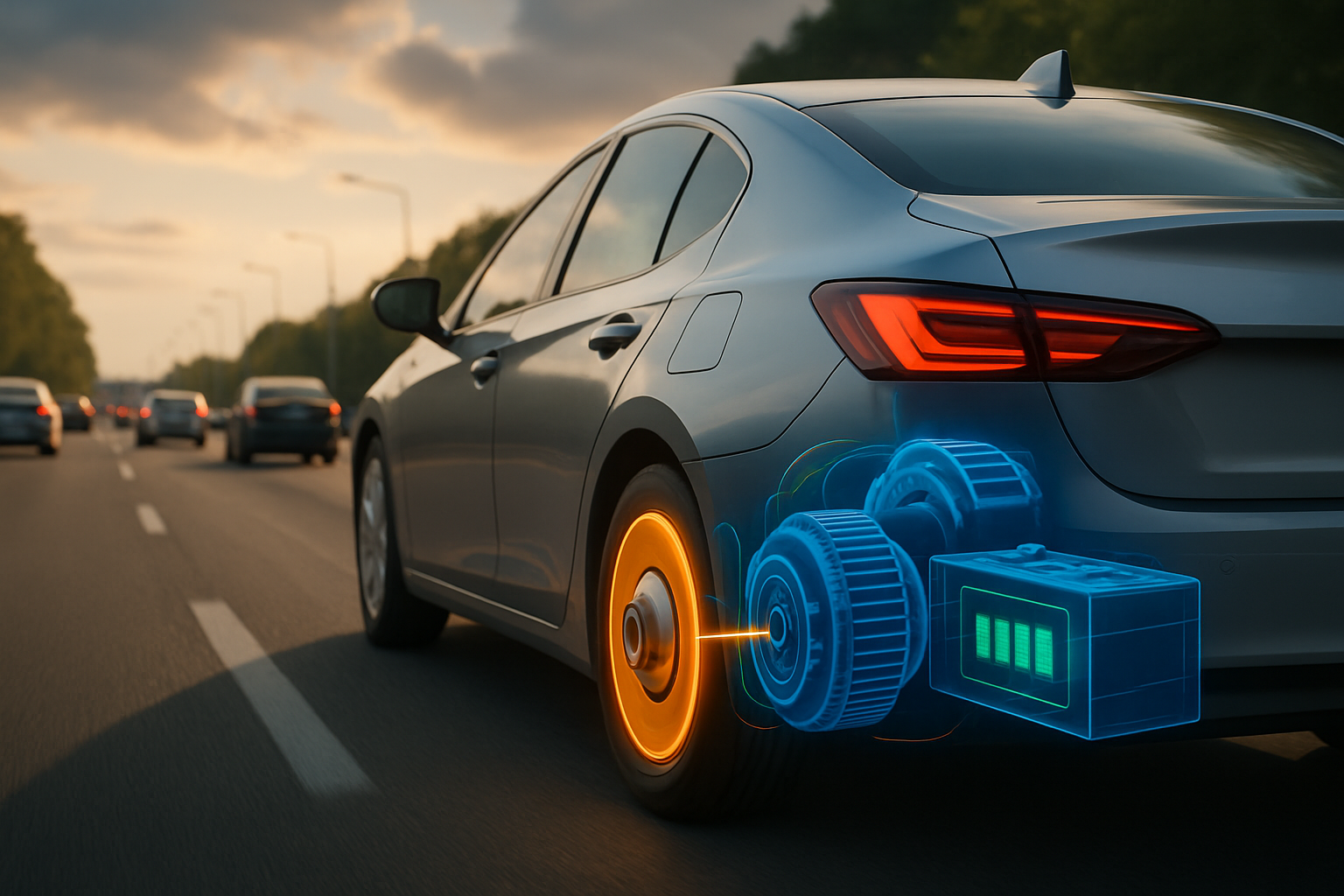Harnessing Exhaust Heat: The Untapped Power of Thermoelectric Generators in Cars
The roar of an engine, the sleek lines of a sports car, the thrill of the open road – these are the elements that captivate automotive enthusiasts. But beneath the surface, a silent revolution is brewing. Imagine a world where the heat from your car's exhaust isn't wasted, but instead transformed into usable electricity. This isn't science fiction; it's the promising reality of thermoelectric generators in automobiles.

The Science Behind Thermoelectric Generation
At its core, thermoelectric generation relies on the Seebeck effect, a phenomenon discovered over two centuries ago. When two different conductors are joined and subjected to a temperature difference, an electrical current is generated. In the context of automobiles, the significant temperature difference between hot exhaust gases and the cooler ambient air creates an ideal environment for this effect to occur.
Thermoelectric generators consist of arrays of semiconductor materials sandwiched between ceramic plates. As exhaust heat passes through one side and cooling occurs on the other, the temperature gradient causes electrons to flow, generating electricity. This process directly converts thermal energy into electrical energy without any moving parts, making it a potentially robust and low-maintenance solution for vehicular applications.
The Journey from Lab to Road
The concept of thermoelectric generation in vehicles isn’t new, but recent advancements have brought it closer to widespread implementation. Early prototypes suffered from low efficiency and prohibitive costs, but ongoing research has led to significant improvements in both areas.
Materials science has played a crucial role in this development. New semiconductor compounds with higher figure of merit (ZT) values – a measure of thermoelectric performance – have emerged. These materials, such as skutterudites and half-Heusler alloys, offer improved efficiency in converting heat to electricity, making TEGs more viable for automotive use.
Automakers and suppliers have taken notice. Several major companies have invested in research and development, with some even integrating prototype TEG systems into test vehicles. These real-world trials have provided valuable data on performance, durability, and potential fuel savings, paving the way for future commercialization.
Integrating TEGs into Vehicle Systems
The integration of thermoelectric generators into automobiles presents both challenges and opportunities. One key consideration is where to place the TEG for optimal performance. The exhaust system, particularly near the catalytic converter where temperatures are highest, is a prime location. However, this placement requires careful thermal management to prevent overheating of the TEG itself.
Another critical aspect is how to incorporate the generated electricity into the vehicle’s electrical system. The power produced by TEGs can be used to charge the battery, power auxiliary systems, or even assist the alternator, reducing the engine load and improving overall efficiency. Some designs propose using the electricity to power an electric turbocharger, creating a symbiotic relationship between exhaust heat and engine performance.
The integration process also involves addressing weight considerations. While TEGs add some mass to the vehicle, the potential fuel savings and reduced emissions could offset this drawback. Engineers are working on optimizing the size and weight of TEG systems to maximize their benefits while minimizing any negative impacts on vehicle dynamics.
Potential Impact on Fuel Efficiency and Emissions
The promise of thermoelectric generators in automobiles lies in their potential to improve fuel efficiency and reduce emissions. By harnessing waste heat, TEGs can provide a source of electricity that doesn’t require additional fuel consumption. This can lead to a reduction in the load on the alternator, which typically draws power from the engine.
Early estimates suggest that TEGs could improve fuel efficiency by 3-5% in conventional vehicles. While this may seem modest, when applied across millions of vehicles, the cumulative effect on fuel consumption and emissions could be substantial. In hybrid vehicles, where efficient energy management is crucial, the impact could be even more significant.
Moreover, as emissions regulations become increasingly stringent worldwide, technologies like TEGs offer automakers another tool in their arsenal to meet these standards. By reducing the overall energy demand on the engine, TEGs contribute to lower CO2 emissions and improved environmental performance.
Challenges and Future Outlook
Despite the promising potential of thermoelectric generators in automobiles, several challenges remain. Cost is a significant factor, as current TEG systems are still relatively expensive to produce at scale. Improving manufacturing processes and increasing production volumes will be crucial in making this technology economically viable for mass-market vehicles.
Durability is another concern. TEGs must withstand the harsh conditions of a vehicle’s exhaust system, including high temperatures, vibrations, and thermal cycling. Developing robust designs and materials that can maintain performance over the lifetime of a vehicle is an ongoing area of research.
Looking to the future, the potential applications of TEGs in automobiles extend beyond just waste heat recovery. Some researchers are exploring the use of TEGs in active thermal management systems, where they could help regulate engine temperature more efficiently. Others are investigating the integration of TEGs with other emerging technologies, such as fuel cells, to create more comprehensive energy recovery systems.
As we accelerate towards a future of more efficient and environmentally friendly vehicles, thermoelectric generators represent a exciting frontier in automotive technology. By turning waste heat into usable electricity, they offer a glimpse into a world where every joule of energy in our cars is put to good use. While challenges remain, the road ahead for TEGs in automobiles looks promising, paved with innovation and the potential to reshape our relationship with energy on the move.





